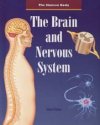Taking a Spill for Science
You can learn more about the University of Pittsburgh’s Human Movement and Balance Laboratory at www.engr.pitt.edu/hmbl/ (University of Pittsburgh).
You can learn more about the use of virtual reality for studying balance and dizziness at www.pittsburghlive.com/x/tribune-review/health/s_270415.html (Pittsburgh Times-Tribune).
For data about falls and hip fractures among older adults, go to www.cdc.gov/ncipc/factsheets/falls.htm (Centers for Disease Control and Prevention). Additional information can be found at faculty.washington.edu/chudler/efall.html (Neuroscience for Kids).
Books recommended by SearchIt!Science:
 |
The Brain and Nervous System— Steve Parker
Published by Raintree Steck-Vaughn, 1997.
Scientists have estimated that your brain can hold 1,000 times the information contained in a 20-volume encyclopedia. The brain, a wrinkled organ that resembles an oversize walnut, is involved in everything we do—from turning a somersault to blinking your eye. Diagrams and dramatic magnified and enhanced color photographs show how the different parts of the brain and nervous system function. Sleeping and dreaming, reflexes, mental illness, balance and coordination, and learning are among the topics discussed. |
Power Words
balance 1. A device for weighing objects or amounts. 2. A steady or stable position. In many animals, the inner ear controls the body’s sense of balance. 3. A condition in which two numbers, amounts, or forces are equal.
biomechanics The scientific study of the mechanics of motion in humans and other animals. Biomechanics is sometimes used by athletes to help analyze and improve their
performance.
neurology The branch of medicine that deals with the diagnosis and treatment of disorders of nerves and the nervous system.
quadriceps The group of muscles at the front of the thigh. The quadriceps straightens the knee.
 |
Copyright © 2002, 2003 Houghton-Mifflin Company. All rights reserved. Used with permission.